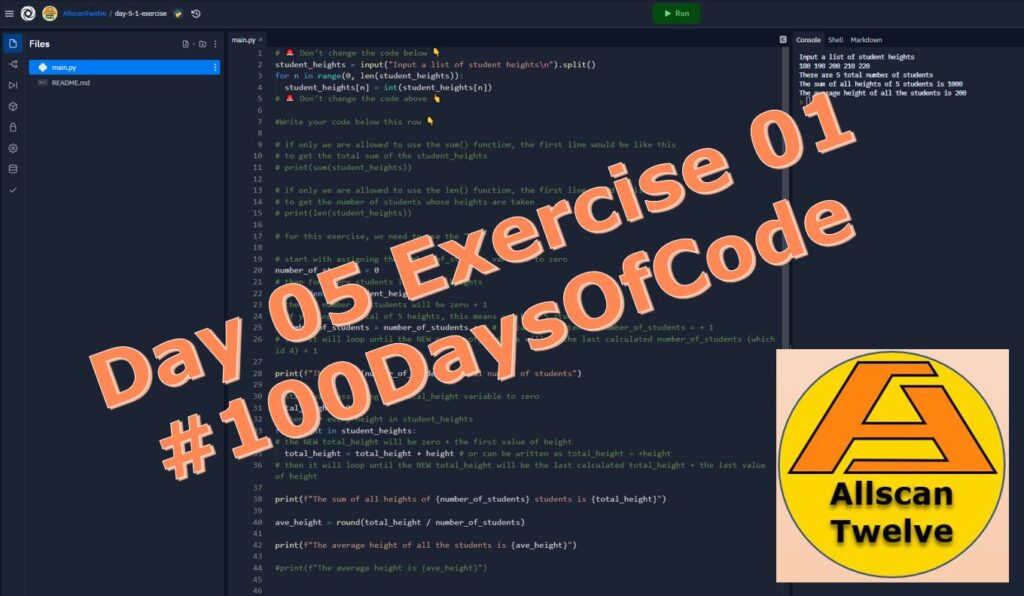Day 05 Exercise 01 is all about Python Loops and I’ll be sharing soon the modified version of this exercise by allowing the user to input the data in the unit of measure they prefer.
#100DaysOdCode #100daysofcodechallenge

Day 05 Exercise 01 is all about Python Loops and I’ll be sharing soon the modified version of this exercise by allowing the user to input the data in the unit of measure they prefer.
#100DaysOdCode #100daysofcodechallenge

What’s up? How are you feeling today? I trust you are well.
After completing Day 4 of the 100 days of Code course, it’s time to put what I’ve learned into practice. So, in this video, I’m going to be writing a short Python code to determine how much amount of money you could be winning.
Here is a little story that inspired me to write this code. I’m sure you are very much familiar with this radio station if you live in England. Every morning, we listen to Heart London radio station while on our way for school drop-off and for January, this new year, the radio station will guarantee that one person will win £22,000 before 4 pm every single weekday.

The mechanics of the contest or game or whatever you want to call it is simple. When you hear “You are listening for the ‘January Jackpot song’”, between 8 am and 4 pm weekdays on Heart, you need to text the word WIN and the name of the artist to 82122.
Then, Heart London radio station will randomly select someone to come on air and if that is you, they will tell you exactly how much money you’ve won. It COULD be an incredible £22,000!
If you are lucky to be the one who could take home the massive £22,000, tax-free, it would definitely change your mood. You could use the prize money for house improvement, or it could be a down payment for your dream house or buy a new car, etc.
Want to see the final Python code in action? Here is the link:
In this challenge, our job is to write a program that allows us to mark a square on the map using a two-digit system. The first digit is the vertical column number and the second digit is the horizontal row number.

I am sure that different Python programmers have different ways of solving this challenge. For me, after 20 minutes of thinking about how to solve the challenge, I came up with this first solution using the “if function”.
If I have a huge number of lists, I believe using the “if function” is not the best solution, so I have to think of a way to replace the corresponding column and row according to the user input. The next thing I can think of is how to replace the item inside the list. How I will do that?
Now that we’ve split the integer into column and row, we can assign a new variable called “new_row” which is equal to map[row -1]
new_row = map[row -1]
Then within this new_row, there are 3 columns, so if the user typed 23, our column is equal to 2, so for this reason, we can now assign the “X” mark to this new row and at column-1
new_row[column – 1] = “X”
Still confused? Why just watch what will happen when I hit the Run button?
